- Home
- Kathy Reichs
The Bone Code Page 3
The Bone Code Read online
Page 3
“It’ll flush. The seat just won’t light up. Besides, you have six others.”
“I can’t charge the car. I’m trapped here!”
Sounded similar to my morning. Except for the TOTO toilet and the Tesla.
“Where is TT?” I asked.
“Who the flipping flamingo knows?”
For years, Anne was married to an attorney named Tom Turnip. Decades back, when Tom was a second-year associate, a senior partner at his firm addressed him as Ted for an entire month. We’d called him Tom-Ted ever since. TT.
The marriage eventually ended. Long, unoriginal story. Anne walked away with a handsome settlement, including property at the Isle of Palms, South Carolina, known as IOP. Despite the financial spanking, she and TT remain friends. With benefits. Apparently, post-storm restoration was not among them.
“Anne, I can’t—”
“They’ve reversed the eastbound lanes on I-26 back to normal. You won’t have any problem getting here.”
“It’s not that.”
“Did you have much damage at your place?”
“No. But—”
“Are you working on any humongous cases?”
“No. But—”
“If your boss needs you, Charlotte is just three hours away.”
She had me there. And were the situation reversed, I knew Anne would drop everything to rush to my aid. She had in the past. More than once.
I looked at the clock.
“Fine.” Unnecessarily dramatic sigh. “It’ll take me at least an hour to secure the annex and pack a few things.”
“Hallelujah, Harry! The kitchen’s intact so I’ll mix us a whole passel of drinks with those little paper umbrellas in ’em. Virgin for you, of course. Thank God, I’ve got Fritos in the pantry.”
I promised an infusion of provisions and disconnected.
Turning, I saw Birdie watching me intently.
“Ready for a road trip?”
Totally noncommittal stare.
A quick call to Nguyen, minimal packing, a go at the tree limb jamming the back door, then we were off.
* * *
Driving across town was an experience I don’t wish to repeat. Broken branches and downed trees littered the streets, requiring U-turns and rerouting at several points. Traffic lights were malfunctioning at many intersections, forcing drivers to figure things out for themselves. Some were better at that than others.
Normally, it’s twenty minutes from the annex to I-77. That morning, it took sixty. With Birdie yowling the whole way.
Three hours after leaving Charlotte, I’d exited I-26 and gone several miles along I-526 when my phone rang for the third time that day.
Area code 843.
The call that would send my life off-kilter for weeks and alter my worldview forever.
“Temperance Brennan.” I answered, using speakerphone.
“Dr. Brennan. My name is Ebony Herrin.” The voice was gravelly, neither high nor low. Based on pitch and cadence, I thought the caller might be black and male. Wasn’t sure on either. “I’m the newly elected Charleston County coroner.”
“How can I help you, Dr. Herrin?”
“No need for titles. I’m an RN.”
“How can I be of help?” Sir? Madam?
“I called your office in Charlotte, got forwarded to Dr. Nguyen. She told me you were heading to Charleston.”
A little backstory.
With one short and unpleasant hiatus, I’ve served for decades as forensic anthropologist for the Mecklenburg County Medical Examiner in Charlotte, North Carolina. The MCME is the decoder of death for the region, and I’m the specialist who analyzes remains unfit for a pathologist’s scalpel: the decomposed, dismembered, burned, mummified, mutilated, and skeletal.
Throughout my career, my boss was Dr. Tim Larabee, a brilliant pathologist, amateur marathoner, and all-around good guy. Larabee ran the office until a hopped-up junkie took him out with two bullets to the gut in a mindless mugging.
After Larabee’s murder, Dr. Margot Heavner was hired. In her spare time, the new chief authored tell-all books on forensics that earned her the label Dr. Morgue. To boost sales, Dr. Morgue appeared on any media platform that would have her and sensationalized her work. I didn’t like many of her comments. And said so. As a result, there was history between us.
Case in point. I publicly criticized Heavner for a series of interviews she did with a tinfoil-hat blogger and conspiracy theorist named Nick Body. Heavner was incensed. And held a grudge. Thus, the hiatus. During Dr. Morgue’s tenure, I was exiled from the MCME.
Fortunately, that tenure was short. Within months of assuming her duties, Heavner was exposed as corrupt and forced to resign in disgrace. Dr. Samantha Nguyen was chosen as her replacement.
Unlike Heavner, Nguyen had no trouble directing outside callers to me.
“Yes.” Tires humming as I rolled across the bridge spanning the Wando River. Glancing south, I saw the quayside cranes at the Wando harbor, dark and bony against the pinks and yellows of the fading day.
“As I’m sure you’re aware, we’ve had no resident forensic anthropologist in South Carolina for many years. But I noted from old reports that you’ve done consults for my predecessor.”
“Yes.” Wary.
“I have a situation that requires your expertise.”
“I’m listening.” Not wanting to.
“Last night’s hurricane tossed a container ashore down near the battery. I won’t burden you with details on the phone, but a couple of kayakers found the thing early this morning, pried off the lid, and spotted what they thought was a body. They called the cops, the cops called me.
“My investigator collected the container and transported it to the MUSC morgue. There are actually two people inside. Just eyeballing the bulk, it looks to be one adult and one kid.”
“Any possibility of visual IDs?” Seriously, Brennan? If that were the case, why would Herrin be contacting you?
“The amount of mass tells me decomp will be too advanced.”
“Any personal effects, clothing, jewelry, et cetera?”
“Both bodies were wrapped in plastic sheeting secured with electrical wire. I didn’t want to do too much poking around, but I peeled back enough to see that at least the one is nude.”
From nowhere, a flashback image. A woman. A child. A plastic container washed from the sea.
My gut clenched, and my mouth went dry.
I swallowed.
“Any clues to cause of death?”
“I caught a better glimpse of the one body, because of the kids pulling on the wrapping and me tugging it a bit more. Looks to be a single bullet to the head. Also, the fingers and teeth are gone.”
It can’t be.
“You’ll need a pathologist.” Sounding calmer than I felt.
“I like a guy named Klopp. I’ve left him a message suggesting y’all meet at the hospital tomorrow. I’ll text you the time he’s available.”
“Fine.”
“A detective named Vislosky came to the scene. Not sure about her stomach for autopsies.” A brief pause, then, “Tell me what you need.”
I did, and we disconnected.
Moments later, I crossed the bridge connecting Mount Pleasant to the Isle of Palms. Salt marsh stretched to the horizon on both sides, tranquil and still. Here and there, I saw a wink of white, an ibis or egret, fading into shadow along with the spartina grass in which it stood.
I turned onto Palm Boulevard, a single phrase ricocheting in my head, a mantra born of foreboding.
It can’t be.
It can’t be.
4
WEDNESDAY, OCTOBER 6–THURSDAY, OCTOBER 7
Anne was four chardonnays in when I arrived. And, predictably, quite serene. Despite one downed palmetto palm that had taken out a corner of the front porch.
Birdie, not a fan of travel in any form, radiated displeasure through the mesh window of his carrier. While I set up a feline hygiene station, Anne�
�s term, she did her best to cheer him with tidbits of a Whopper left over from her lunch.
Anne has never been a cat person, so her best wasn’t great. Ditto for dogs, birds, rabbits, and fish. Sensing this aversion to pets, the cat kept his distance, despite the tempting bribes.
The power was still out, so Anne and I barbecued grouper fillets on the grill. I’d brought lettuce, tomatoes, and a somewhat sad-looking avocado that combined into a passable salad. All the chopping and tossing and grilling distracted me momentarily from the gruesome images troubling my thoughts.
We dined on the back deck, watching the ocean roll ashore and recede. Like my hostess, it was also remarkably calm.
In addition to the uprooted palm, the damage that had goosed Anne into near-panic mode included sand in the yard and loss of the boardwalk leading over the dunes and down to the beach. She could now see the humor in her overreaction. In everything, actually, funny or not.
We talked as we ate. Nothing serious, mostly our kids. Herrin’s call had made me far too anxious to tackle anything deep.
Anne reported that her youngest, Stuart, was still a gay rights activist and currently living in Colorado. The twins, Lola and Josh, were in L.A. trying to break into film, one as a writer, one as an actor. I reported that my daughter, Katy, finishing her second deployment to Afghanistan, was due to rotate stateside in several weeks. We slapped a high five and yelled “Hot damn!”
Anne asked about Ryan. I explained that he was in Yellowknife.
“That boy’s a keeper,” she said, not slurring but moving that way. “Dangle him much longer, he’ll slip the line.”
“You’ve mentioned that.” Ad nauseam.
“Well, it’s true. What’s your damn problem?”
When I danced around an answer, she didn’t press.
“Anything interesting going workwise these days?”
Wishing to avoid the inquisition that would ensue should I mention Herrin’s call, I told her about Polly Beecroft and the death mask.
“So who is it?” When I’d ended.
“I don’t know. But here’s the odd part. They all look vaguely familiar to me.”
“The twin sisters and their grandmother and great-aunt?” Beyond dubious.
“And the mask.”
“How can that be if you’d never laid eyes on any of them? I mean, before Polly.”
“Maybe they remind me of someone I’ve met.”
“You said Polly has a condo at Rosewood. Maybe you saw her there.”
“I considered that. But Mama’s only lived there a very short time. And her unit isn’t anywhere near Polly’s, not even in the same building. Besides, if I’d seen Polly in passing, I think I’d remember.”
After a pause, Anne said, “Josh and Lola look about as much alike as a parrot and a hamster.”
“They aren’t monozygotic.”
Blank stare.
“In their case, two little swimmers found two separate eggs.”
“Right. Different genes. Chromosomes. Whatever.”
Anne disappeared into the kitchen for another chardonnay fill-up. Her fifth? A text pinged in as she was coming back through the door.
I glanced at my phone. Herrin.
“Is that monsieur le détective?”
“No.”
“Katy?”
“No.”
“Brad fuckin’ Pitt?” Boozy chuckle at her own joke.
Herrin’s corpses were not my preferred topic of conversation. But my absence the next day would need justification.
“It’s the Charleston County coroner,” I said.
There are two types of people in this world: those who wish to avoid all reference to my work and those who relish every grisly detail. Like my mother, my BFF rolls with the latter.
Anne leaned forward, eyes luminous with reflected moonlight. “Dish.”
“She wants my help with a case.” He?
“A murder?” Entirely too enthused.
“It’s no big deal. Some remains washed ashore during the storm.”
Sensing I wasn’t being straight with her, Anne’s antennae went live.
“If it’s no big deal”—hooking slightly sloppy air quotes—“why have you been tense as a bedspring all evening?”
What the hell? Herrin hadn’t shared top-secret intel. And discussing my fears might ease them.
I outlined the basics. The container. The remains. The plastic wrapping and electrical wire. The trauma. Anne listened without interrupting.
When I’d finished, “Sounds grisly, but nothing you haven’t seen before.”
“That’s the problem. It sounds exactly like a case I had in Quebec.”
“When?”
“Fifteen years ago.”
“Are you serious?”
“I am.”
“That’s a long time back and a long way from here.”
I shrugged.
“Fine. What are the parallels?”
Images fired in my brain.
I began listing items using the fingers of my right hand.
Pointer. “In both cases, the bodies were stripped, wrapped in plastic, placed in a waste container, and thrown or dropped into the ocean.” Technically, it was a river in Montreal, but close enough. Middle digit. “In Quebec, I estimated that one individual was a female in her thirties, the other a child between eight and ten. Herrin thinks the victims here are an adult and a kid.”
“Are you certain that’s true?”
Good point, Annie. “No. Herrin is an RN, not a medical doctor or anthropologist.”
“Go on.”
I continued, sans digits. “In both cases, death was due to gunshot trauma to the head. In both cases, the victims’ fingers were cut off and their teeth were destroyed.”
“So, no prints, no dentals.” Did I mention that Anne watches a lot of crime shows?
I nodded.
“Time since death?”
“It was hard to be precise. I estimated more than one but less than five years.”
“Did Ryan work the case?”
“He and I busted our asses for months. At Ryan’s urging, a task force was formed. Members searched missing-persons records to hell and back. Canvassed everyone living anywhere near the site where the container washed up. Pulled marina and port records going back years. Set up special phone lines for call-in tips.”
I recalled the effort as if it were yesterday.
“Ryan floated queries to every elementary school in Quebec asking if any kid had stopped attending, eventually expanded to other provinces and down into Vermont and New York. He spent endless hours checking and rechecking the RCMP, FBI, and other databases.
“I had facial approximations made from the skulls. The sketches were broadcast by a few TV stations and published in some papers. Surprisingly, the media weren’t all that interested.”
“And?”
“And zilch. It all led nowhere.”
“The victims were never ID’d?”
“Nope.”
“What happened to them?”
“Eventually, the bodies were buried.” I went silent, recalling the heartbreak I’d felt at our failure.
“That’s so sad.”
“One of those victims was just a kid. To this day, that kid is lying in a grave marked by nothing but a number. Meanwhile, someone somewhere is wondering what happened to her, and someone else is thinking they got away with it.” Said with far too much emotion.
“That case really got to you,” Anne said softly.
“Child murders always do.”
“Because of Kevin?” Reaching out to place her hand on mine.
When my baby brother succumbed to leukemia at age three, my entire eight-year-old universe collapsed. Though I’m not a believer in Freudian theory, I suspect that at some level, Kevin’s passing is the subconscious force underlying my commitment to the dead.
“No,” I mumbled. “Maybe. Hell, who knows?”
Anne knocked back the remains in her glas
s, set it overly carefully on the table, and stood.
“Tomorrow I get to rounding up workers to sort out this mess,” she said, twirling an upraised hand to take in the house and yard. “And you get to slapping names on those bodies.”
* * *
In the year 2021 CE, the state of South Carolina still relies on a coroner system to oversee death within its boundaries. And on elections to determine who that overseer will be.
To run for office, a candidate must be at least twenty-one years old, a U.S. citizen, a county resident, a registered voter, a high-school graduate, and free of any felony convictions. Hot damn. That excludes Ted Bundy and the kid on that cereal commercial.
A medical examiner, on the other hand, is usually appointed and must be a forensic pathologist, a pathologist, or, minimally, an MD. While some coroners are very good at what they do, their roles are limited and never involve scalpels or Y incisions.
Charleston County has an additional requirement for coroner, met either by experience in death investigation or by varying educational achievements. One qualifying credential is a BS degree in nursing. Thus, Ebony Herrin, RN.
Though Herrin’s office is located out in the burbs, most autopsies are performed at the Medical University of South Carolina’s main hospital, a bland, multistory building in a complex of bland, multistory buildings situated a respectful hair outside Charleston’s most privileged hood, “South of Broad” on the “Peninsula.” Think cobbled streets, brick Georgians, walled gardens, carriage houses.
By nine thirty in the morning, I’d navigated the same sort of debris field as I had in Charlotte. Lots of tree branches and Spanish moss lying on the ground. A downed power line here and there. Trash bins and lawn furniture dropped or washed up in odd places. The occasional street blockage due to standing water. Already much of the wreckage lay stacked or in large tangles along the curbs.
After parking as directed by Herrin, I made my way to Ashley Avenue and went in through the hospital’s main entrance, having passed an armada of brightly colored food trucks along the way. Promise to self: an empanada is in your future. Maybe a roti.
Thanks to backup generators, the hospital was in full operation. After presenting ID at the desk, I requested directions to the morgue. The receptionist, an elderly black woman wearing an ill-fitting wig, asked me to wait. Then, moving at sloth speed, she dialed an extension and connected with someone somewhere, probably Cambodia.

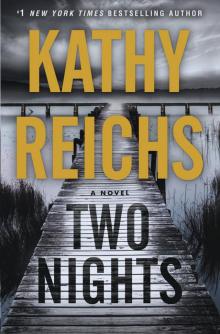 Two Nights
Two Nights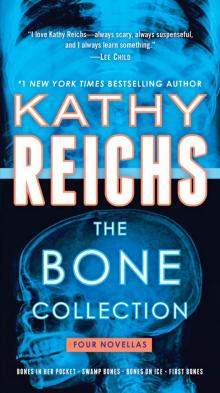 The Bone Collection: Four Novellas
The Bone Collection: Four Novellas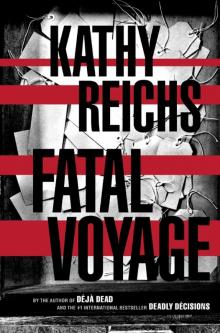 Fatal Voyage
Fatal Voyage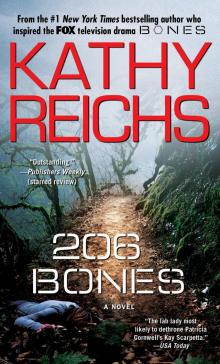 206 Bones
206 Bones Bones to Ashes
Bones to Ashes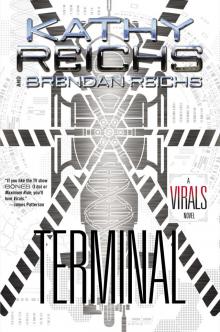 Terminal
Terminal Monday Mourning
Monday Mourning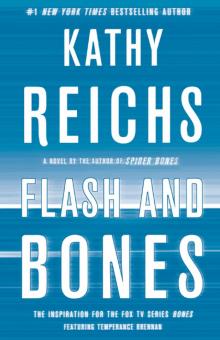 Flash and Bones
Flash and Bones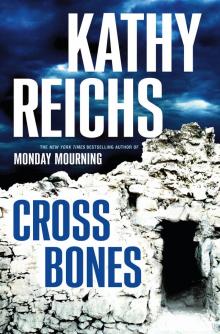 Cross Bones
Cross Bones Devil Bones
Devil Bones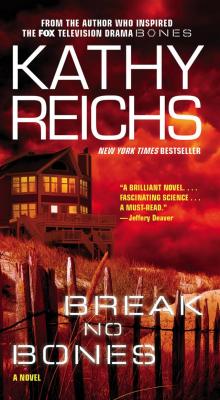 Break No Bones
Break No Bones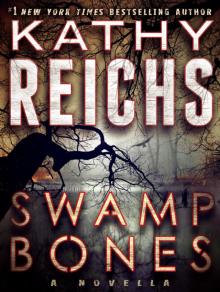 Swamp Bones
Swamp Bones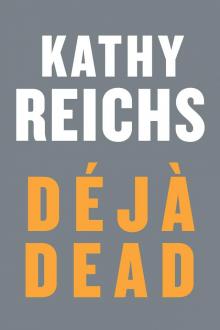 Déjà Dead
Déjà Dead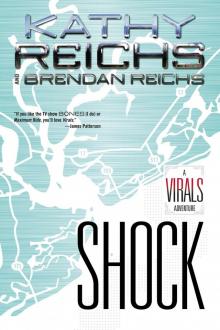 Shock
Shock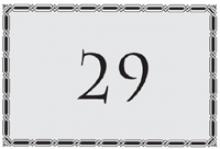 Spider Bones
Spider Bones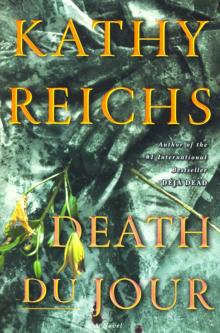 Death Du Jour
Death Du Jour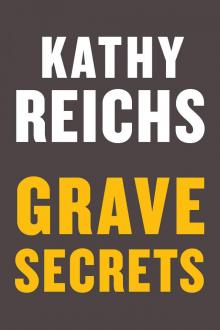 Grave Secrets
Grave Secrets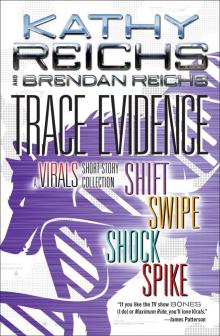 Trace Evidence: A Virals Short Story Collection
Trace Evidence: A Virals Short Story Collection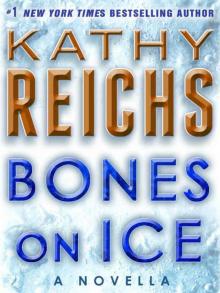 Bones on Ice
Bones on Ice The Bone Code
The Bone Code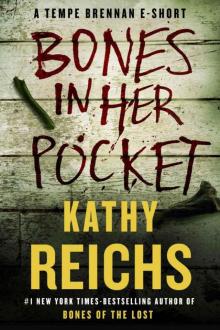 Bones in Her Pocket
Bones in Her Pocket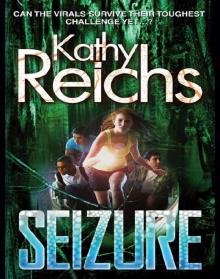 Seizure:
Seizure: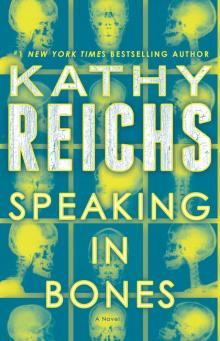 Speaking in Bones
Speaking in Bones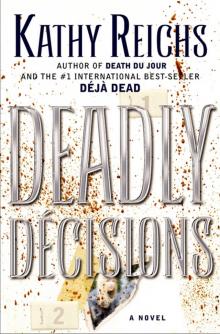 Deadly Decisions
Deadly Decisions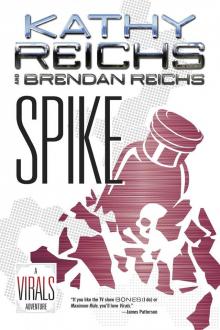 Spike
Spike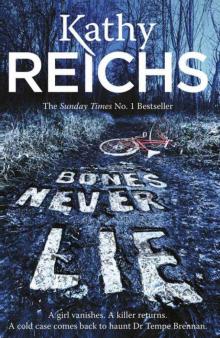 Bones Never Lie
Bones Never Lie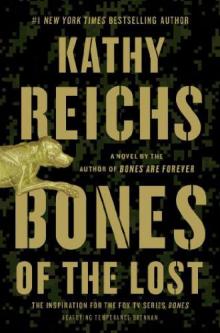 Bones of the Lost
Bones of the Lost Virals 03.5 - Swipe
Virals 03.5 - Swipe Exposure
Exposure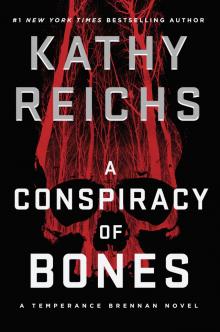 A Conspiracy of Bones
A Conspiracy of Bones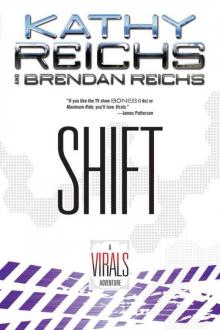 Shift (tory brennan)
Shift (tory brennan)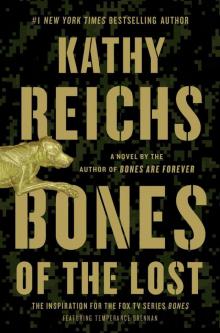 Bones of the Lost: A Temperance Brennan Novel tb-16
Bones of the Lost: A Temperance Brennan Novel tb-16 Virals tb-1
Virals tb-1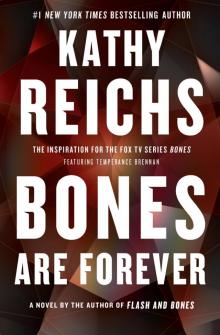 Bones Are Forever tb-15
Bones Are Forever tb-15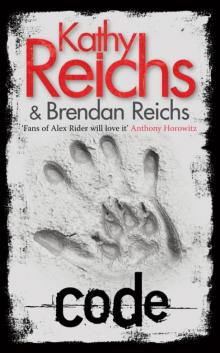 Code tb-3
Code tb-3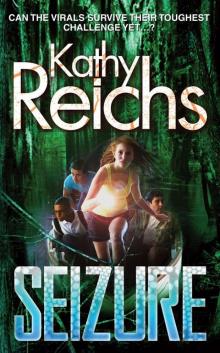 Seizure tb-2
Seizure tb-2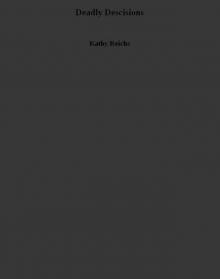 Deadly Descisions
Deadly Descisions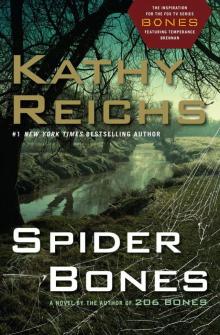 Spider Bones: A Novel
Spider Bones: A Novel